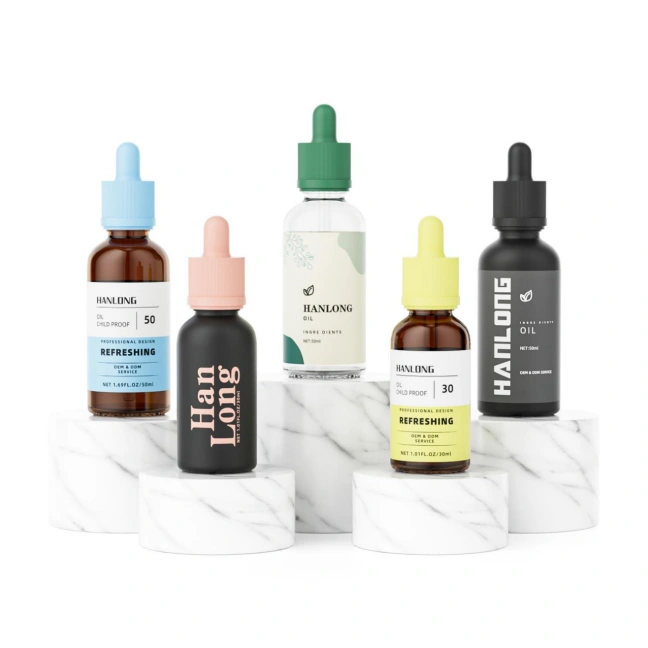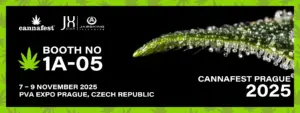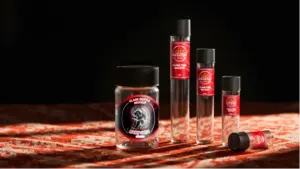The world of cannabis is evolving at a rapid pace, and few products illustrate this transformation better than cannabis tinctures. Once a mainstay of 19th-century medicine cabinets, tinctures are now enjoying a renaissance thanks to advances in extraction technology, changing regulations, and shifting consumer preferences. Today’s cannabis tinctures offer a discreet, precise, and versatile way to harness the plant’s therapeutic and recreational benefits, appealing to everyone from wellness enthusiasts to patients seeking targeted relief. As the market expands and diversifies, understanding the nuances of tincture production, packaging, and market dynamics is essential for both consumers and industry professionals.
This comprehensive guide delves deep into the science and history of cannabis tinctures, explores the latest innovations in packaging, and analyzes the trends shaping the global market. Whether you’re a curious newcomer, a seasoned user, or a business leader navigating the cannabis industry, this blog will provide you with fact-based insights and actionable knowledge. Join us as we unravel the complexities and opportunities of cannabis tinctures in 2025 and beyond.
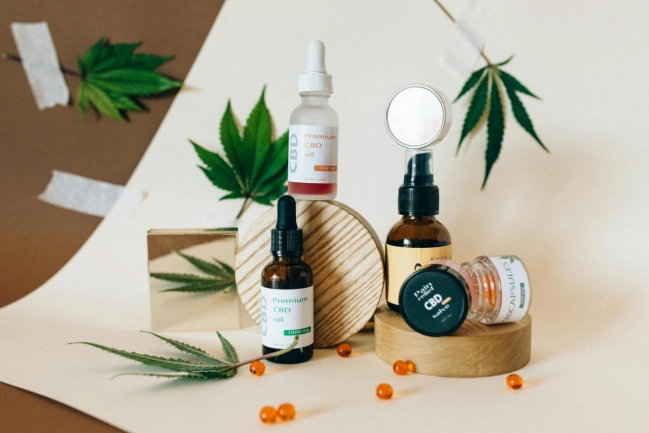
Understanding Cannabis Tinctures
Definition and Historical Context
Cannabis tinctures are concentrated liquid extracts that capture the bioactive and psychoactive compounds of the cannabis plant, primarily cannabinoids like THC and CBD, as well as terpenes and flavonoids. The term “tincture” refers to any herbal extract made by soaking plant material in a solvent, a practice that dates back thousands of years and was widely used in Western medicine until the early 20th century. Cannabis tinctures, sometimes called “green dragon,” were once a staple in pharmacies and are now experiencing renewed popularity due to their discretion, versatility, and precise dosing.
How Cannabis Tinctures Are Made
The production of cannabis tinctures involves extracting cannabinoids and other desirable compounds from the plant using a solvent. The most common solvents are:
Ethanol (food-grade alcohol): The traditional and most effective solvent, capable of dissolving a wide range of cannabinoids and terpenes. Ethanol-based tinctures often have a dark green or brown color due to the extraction of chlorophyll and other plant materials.
Glycerin: Used for alcohol-free tinctures, glycerin offers a sweeter taste and is suitable for those sensitive to alcohol. However, glycerin-based tinctures tend to have a shorter shelf life and may not extract as broad a spectrum of compounds as alcohol.
Oils (such as MCT oil): Sometimes used for tinctures, especially those intended for oral ingestion, though technically these are oil infusions rather than true tinctures.
The basic steps in tincture production are:
Preparation: Dried and ground cannabis flower is prepared to maximize surface area.
Soaking: The cannabis is soaked in the chosen solvent for at least two weeks, allowing cannabinoids, terpenes, and other compounds to dissolve into the liquid.
Decarboxylation: To activate cannabinoids like THC and CBD, the plant material is often heated (decarboxylated) before or during the soaking process.
Filtration: The mixture is strained to remove plant solids, leaving behind a potent liquid extract.
Solvent Removal (if necessary): In some methods, especially with ethanol, the solvent may be partially evaporated to concentrate the tincture further.

Types of Cannabis Tinctures
Cannabis tinctures are categorized by their cannabinoid content and extraction spectrum:
Full-Spectrum Tinctures: Contain the complete range of cannabinoids, terpenes, and flavonoids present in the original plant. These are typically made with alcohol to maximize extraction and are valued for the “entourage effect,” where compounds work synergistically.
Broad-Spectrum Tinctures: Include a wide array of cannabinoids and terpenes but with THC removed or reduced to undetectable levels. These are common in CBD tinctures for users seeking benefits without psychoactivity.
Isolate Tinctures: Feature only a single cannabinoid, such as pure CBD or THC, with all other compounds removed. These are ideal for those who want to avoid any trace of other cannabinoids, especially THC.
THC Tinctures: Made from high-THC cannabis, these tinctures are psychoactive and available only in legal markets.
CBD Tinctures: Derived from hemp or cannabis with low THC, these are non-psychoactive and widely available.
CBD/THC Ratio Tinctures: Offer specific ratios of CBD to THC (e.g., 2:1, 20:1), allowing tailored effects for different therapeutic needs.
Tinctures can also be unflavored or flavored, and some brands offer acidic cannabinoid forms like CBDA or THCA for users interested in raw, non-decarboxylated compounds.
Methods of Use
Cannabis tinctures are prized for their flexibility in administration:
Sublingual (Under the Tongue): The most common method, where the user places drops under the tongue and holds them for 30–60 seconds before swallowing. This enables cannabinoids to be absorbed directly into the bloodstream via mucous membranes, leading to effects within 10–30 minutes.
Oral (Swallowed or Mixed with Food/Drink): Tinctures can be ingested directly or added to foods and beverages. This route results in slower onset (30–60 minutes) as the cannabinoids are processed by the digestive system and liver, similar to edibles.
Topical Application: While less common, tinctures can be applied to the skin for localized effects. However, cannabinoids do not enter the bloodstream this way, so psychoactive effects are absent.
Dosing and Customization
Tinctures offer precise and customizable dosing, a key advantage over other cannabis products. Most bottles include a dropper marked for easy measurement. Dosage varies based on individual tolerance, desired effects, and product potency. A typical starting dose is 2.5 milligrams of cannabinoids, with users gradually increasing as needed. Dosage charts help guide beginners, with microdoses starting at 3 mg and strong doses reaching 30 mg or more per milliliter in potent formulations.
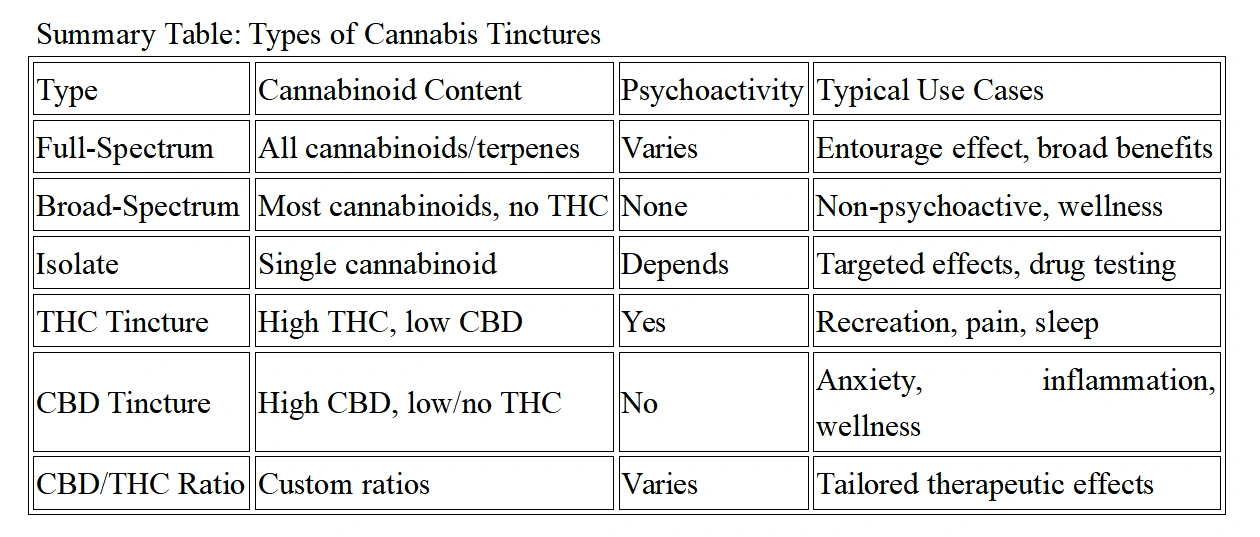
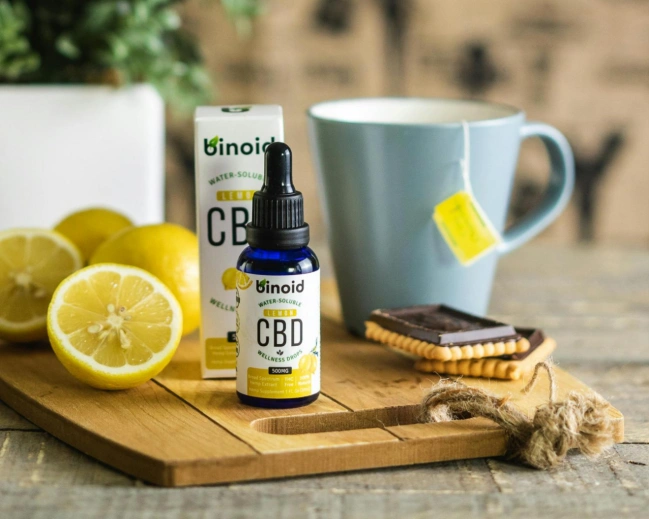
Benefits and Drawbacks of Cannabis Tinctures
Therapeutic Benefits
Cannabis tinctures are valued for their wide-ranging therapeutic properties, making them a preferred choice for both medical and recreational users. Key benefits include:
Pain Relief: Both THC and CBD tinctures are frequently used to manage chronic and acute pain. THC interacts with the body’s endocannabinoid system to modulate pain perception, while CBD can reduce inflammation, contributing to overall pain reduction.
Stress and Anxiety Reduction: THC tinctures, especially in moderate doses, can induce relaxation and alleviate symptoms of stress, anxiety, and depression. CBD-rich tinctures are particularly popular for their non-intoxicating calming effects, and combining THC with CBD may enhance the anxiolytic and mood-stabilizing properties.
Mood Enhancement: THC tinctures can elevate mood and promote a sense of well-being, which is beneficial for individuals dealing with mood disorders or the emotional impact of chronic illness.
Sleep Improvement: Many users report improved sleep quality and relief from insomnia when using THC or balanced THC/CBD tinctures. The calming and sedative effects of certain cannabinoids help regulate sleep cycles and promote restful sleep.
Appetite Stimulation and Nausea Relief: THC tinctures are effective for stimulating appetite and reducing nausea, especially for patients undergoing chemotherapy or suffering from appetite loss due to medical conditions.
Anti-inflammatory and Neuroprotective Effects: Both THC and CBD have demonstrated anti-inflammatory properties, making tinctures useful for conditions like arthritis. Additionally, cannabinoids may offer neuroprotective benefits, potentially supporting brain health and protecting against neurodegenerative diseases.
Muscle Spasm and Seizure Control: Tinctures, particularly those high in CBD, have been used to reduce muscle spasms in conditions such as multiple sclerosis and to manage certain forms of epilepsy.
Practical and Lifestyle Advantages
Fast-Acting and Versatile: When used sublingually, tinctures are absorbed quickly into the bloodstream, offering faster relief than edibles, which must be digested first. This rapid onset is crucial for managing acute symptoms like pain or anxiety.
Precision Dosing: The dropper allows users to measure doses accurately, making it easier to titrate and find the optimal amount for symptom relief without overconsumption.
Discreet and Convenient: Tinctures are odorless, portable, and easy to use in public or private settings, offering a smoke-free alternative to traditional cannabis consumption methods.
Long Shelf Life: Properly stored tinctures can remain potent for months or even years, making them a practical choice for infrequent or as-needed use.
Customizable Formulations: Tinctures come in a variety of cannabinoid ratios and can be blended with other herbs, allowing users to tailor effects to their specific needs.
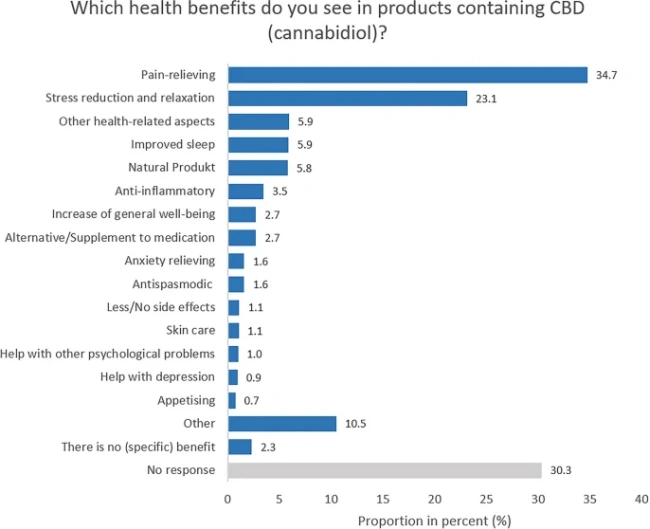
Drawbacks and Considerations
Despite their advantages, cannabis tinctures also present several potential drawbacks:
Psychoactive Effects: THC tinctures can cause euphoria, altered perception, and relaxation. While these effects may be desirable for some, they can impair short-term memory, concentration, and cognitive function, making them unsuitable for individuals who need to remain alert or focused.
Risk of Overconsumption: Although tinctures allow for precise dosing, it is still possible to consume too much, especially for inexperienced users. Overconsumption of THC can lead to anxiety, paranoia, dizziness, nausea, or other unpleasant effects. Beginners are advised to start with low doses and gradually increase as needed.
Taste Sensitivity: Alcohol-based tinctures can have a strong, bitter taste that some users find unpleasant. While this can be mitigated by mixing tinctures with food or drinks, taste remains a barrier for some.
Alcohol Content: Some tinctures use alcohol as a solvent, which may not be suitable for individuals with alcohol sensitivities or certain medical conditions. Glycerin- or oil-based tinctures are available as alternatives, but may have different extraction profiles or shorter shelf lives.
Dry Mouth: Like other cannabis products, tinctures can cause dry mouth (“cottonmouth”) due to reduced saliva production. Staying hydrated can help alleviate this side effect.
Cognitive Impairment: Regular use of THC tinctures may impact memory and cognitive function, particularly in younger users or those who consume high doses over extended periods. These effects are often reversible after discontinuing use but can be concerning for students, professionals, or anyone requiring mental clarity.
Cost: Depending on usage and formulation, tinctures can be more expensive than other cannabis products, especially for those requiring higher doses.
Legal Restrictions: The legality of cannabis tinctures varies widely by location. Some regions allow only CBD tinctures, while others restrict or prohibit all cannabis products. Users must be aware of and comply with local laws to avoid legal issues.
Comparison to Other Forms of Cannabis
Versus Smoking/Vaping: Tinctures provide a smoke-free, odorless alternative, reducing exposure to respiratory irritants and making them more discreet and accessible for medical users.
Versus Edibles: Tinctures offer faster onset and more precise dosing than edibles, which can take hours to take effect and are harder to dose accurately.
Versus Topicals/Tablets: Tinctures are more versatile, allowing for sublingual, oral, or even topical use, whereas topicals are limited to localized relief and tablets have a fixed dose.
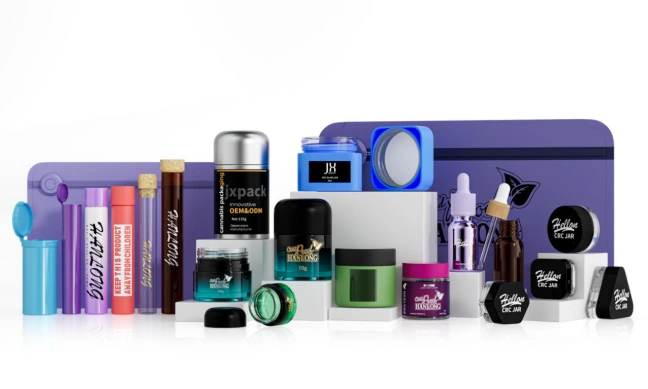
Packaging of Cannabis Tinctures
Primary Packaging: Materials and Formats
The core function of tincture packaging is to protect the product from environmental factors such as heat, light, and moisture, all of which can degrade potency and quality. The most common primary packaging options for cannabis tinctures include:
Glass Dropper Bottles: By far the industry standard, these bottles provide a non-reactive, airtight environment that preserves the tincture’s integrity. Amber or cobalt glass is often used to block UV light, which can degrade cannabinoids and terpenes. Dropper caps allow for precise dosing and are usually paired with child-resistant features.
Plastic Bottles and Vials: Durable and lightweight, plastic options (often PET or polypropylene) are less common for tinctures but are valued for portability and resistance to breakage. Some are designed with child-resistant and moisture-resistant caps, making them compliant with safety regulations.
Squeeze Bottles, Cartridges, and Vials: These are used for specialized formulations or sample sizes, offering alternative dosing mechanisms and portability.
Secondary Packaging: Boxes and Branding
Secondary packaging not only protects the primary container during shipping and retail handling but also serves as a canvas for branding and regulatory information. Popular materials and styles include:
Cardboard Boxes: Lightweight, customizable, and cost-effective, cardboard (or folding carton) boxes are widely used for tincture bottles. They’re ideal for intricate printing, branding, and providing product information.
Kraft Boxes: Made from recycled paper, kraft boxes offer a sustainable, sturdy option with a natural, organic appearance. They are favored by brands seeking an eco-friendly image.
Corrugated Boxes: Used for shipping or heavier products, these offer superior protection during transport.
Rigid Boxes: Associated with luxury products, rigid boxes provide a premium unboxing experience and extra protection but come at a higher cost.
Custom Shapes and Telescopic Boxes: Brands often use unique shapes or telescopic designs to stand out on retail shelves and enhance consumer engagement.
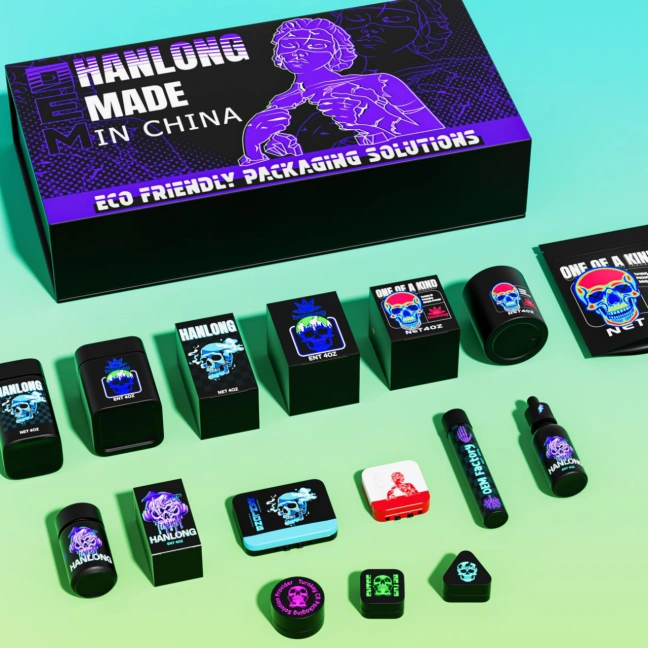
Key Packaging Features and Innovations
Child-Resistant Closures: All cannabis tincture packaging must be child-resistant by law in most jurisdictions. This is achieved through mechanisms like push-and-turn dropper caps, squeeze-and-pull vials, or locking lids that require dexterity to open.
Tamper-Evident Seals: Tamper-evident features, such as shrink bands, tear notches, or heat seals, ensure product integrity and build consumer trust by providing visible evidence if a product has been opened or altered.
Airtight and Moisture-Resistant: Airtight seals protect tinctures from oxidation and moisture, preserving potency and flavor. This is especially important for plastic vials and bottles, which may otherwise be more permeable than glass.
Labeling and Compliance: Packaging must include clear, compliant labeling-typically featuring cannabinoid content, dosage instructions, batch numbers, health warnings, standardized cannabis symbols, and sometimes QR codes linking to lab results. Label content and font size are regulated and vary by jurisdiction.
Customization and Branding: Brands leverage custom finishes, holographic elements, soft-touch coatings, and unique shapes to differentiate their products. Shrink sleeves are increasingly popular for 360-degree, high-resolution branding and tamper evidence.
Sustainability and Environmental Impact
The cannabis industry faces growing scrutiny over packaging waste, especially single-use plastics. In response:
Biodegradable and Recycled Materials: Brands are turning to biodegradable hemp plastics, recycled cardboard, and compostable paper as alternatives to conventional plastics. Hemp plastic, for example, offers durability and breaks down within months, reducing landfill impact.
Eco-Friendly Design: Lightweight, foldable paper packaging reduces shipping emissions and material use. Kraft and recycled paper options reinforce a brand’s commitment to sustainability.
Consumer Demand: Eco-conscious consumers increasingly prefer brands with sustainable packaging, making it a competitive differentiator.
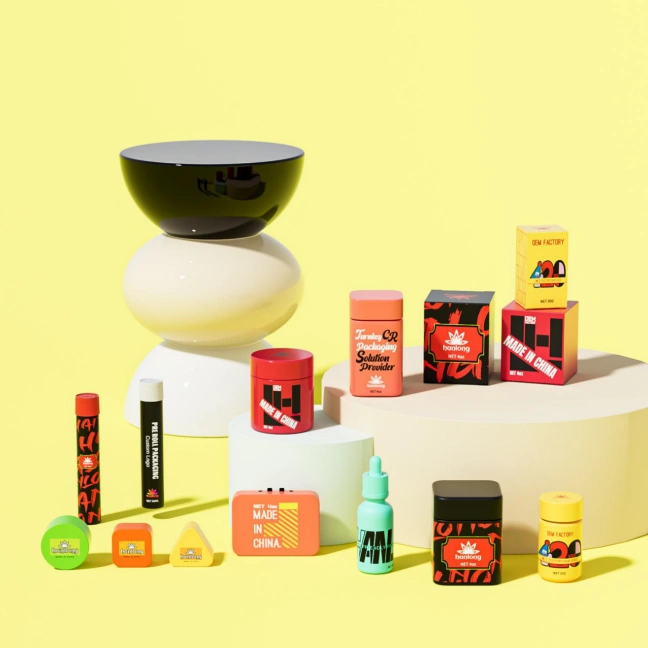
Regulatory Landscape
Cannabis tincture packaging is governed by a complex and evolving set of regulations:
Child-Resistance and Tamper Evidence: Universal requirements in legal markets to prevent accidental ingestion and ensure safety.
Opaque and Sturdy Containers: Many states and countries require tinctures to be packaged in opaque containers to prevent product visibility and in sturdy packaging to avoid breakage or leakage.
Labeling Standards: Regulations dictate the inclusion of health warnings, standardized symbols, ingredient lists, and sometimes certificates of analysis from third-party labs.
State and Country Variations: Packaging laws differ by jurisdiction, with some states (like California and Massachusetts) imposing stricter requirements on opacity, labeling, and packaging durability than others.
Emerging Trends and Future Directions
Smart Packaging: QR codes and digital labels are being used to provide consumers with instant access to lab results, dosing guides, and educational content.
Flexible Packaging: Flexible mylar pouches and resealable bags are gaining popularity for their customization options, cost-effectiveness, and space-saving benefits.
Luxury and Gift Packaging: As the market matures, brands are investing in premium packaging experiences, including rigid boxes and specialty finishes, to appeal to discerning consumers.
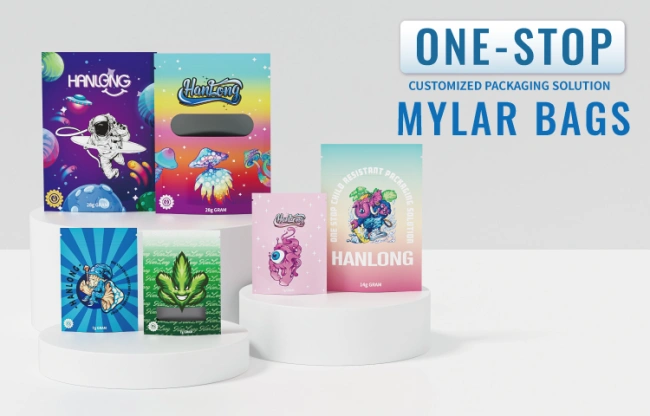
Market Overview and Trends
Market Size and Growth Trajectory
The cannabis tincture market has experienced robust growth, paralleling the broader cannabis extract sector. As of 2024, the global cannabis tincture market is valued at over $2.5 billion and is projected to grow at a compound annual growth rate (CAGR) of 13.2% through 2030. The overall cannabis extract market, which includes tinctures, oils, and concentrates, is even more substantial-estimated at $16.56 billion in 2025 and forecasted to reach $73.28 billion by 2034, with a CAGR of 18.05%. In the United States, the cannabis industry as a whole is expected to generate nearly $45 billion in revenue in 2025, with projections reaching $67.2 billion by 2030.
This explosive growth is driven by several key factors:
Increased Legalization: More countries and states are legalizing both medical and recreational cannabis, expanding market access and consumer reach.
Expanding Applications: Cannabis tinctures are being used not only for medical and wellness purposes but also in food, beverages, cosmetics, and personal care products.
Rising Consumer Awareness: As education around cannabis benefits deepens, more consumers are turning to tinctures for their perceived health and wellness advantages.
Consumer Demographics and Evolving Preferences
The demographic landscape for cannabis tinctures is rapidly shifting:
- Millennials remain the dominant buyers,accounting for 46.2% of cannabis spending, but Gen Z is the fastest-growing segment, with their share of total cannabis sales increasing by 11.3% year-over-year.
- Older adults are increasingly adopting cannabis tinctures.From 2005 to 2021, cannabis use among those aged 65 and older surged by over 2,000%, and by 472% among those aged 50–64. This trend reflects growing acceptance and interest in tinctures for medical and wellness applications.
- Gender distribution is evening out:As of 2021, 56.6% of cannabis users were male and 43.4% female, with women’s participation in the market steadily rising.
- Usage patterns vary:Older adults (45+) are more likely to use cannabis weekly for non-medical reasons, while Indigenous populations report higher daily use for medical purposes.
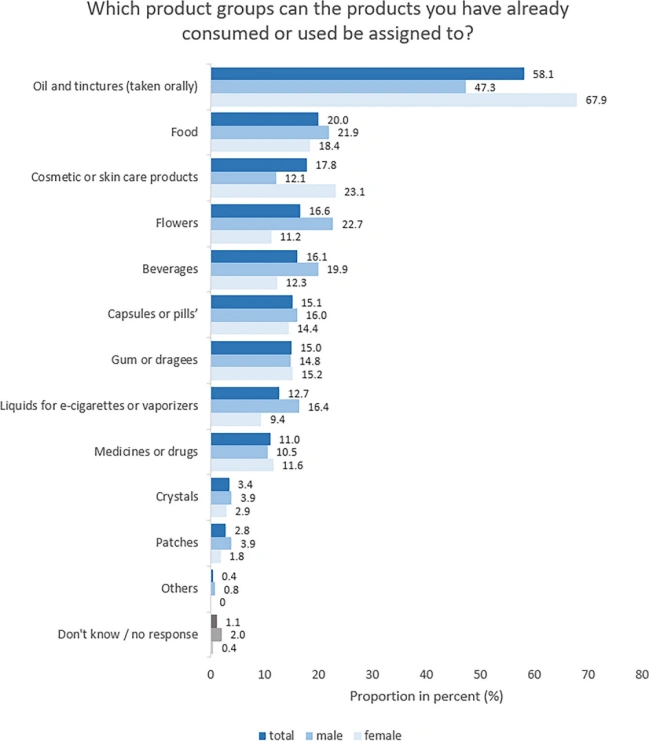
Product Diversification and Innovation
- Manufacturers are responding to diverse consumer needs by expanding tincture offerings:
- THC-dominant tinctures for recreational and medical use.
- CBD-rich and full-spectrum formulations for wellness and therapeutic purposes.
- Custom cannabinoid blends (e.g., CBG, CBN, THCV) and terpene-infused tinctures for targeted effects.
Technological innovation is a major driver:
- Nano-emulsification and advanced filtration are improving bioavailability and purity, making tinctures more effective and palatable.
- Artificial intelligence (AI) is being integrated into extraction processes, optimizing yields and consistency, and enabling more sophisticated product development.
- Smart packaging and integration with digital devices are emerging, allowing for precise dosing and effect tracking.
Market Dynamics: Pricing, Competition, and Consolidation
Price compression has been a defining trend since 2021, with average retail prices dropping by as much as 32% in some markets. This has led to tighter profit margins and increased competition among brands.
Brand consolidation is accelerating, with the top five brand houses accounting for a growing share of sales; in some states, a single brand dominates up to 25% of top-selling products.
Retail channels are diversifying: Tinctures are sold through dispensaries, pharmacies, and increasingly via online platforms, especially for hemp-derived products.
Marketing, Regulation, and Consumer Education
Advertising restrictions on major digital platforms (Google, Facebook, Twitter) force brands to rely on cannabis-specific networks, content marketing, and SEO.
Regulatory complexity requires brands to stay agile, as packaging, labeling, and advertising rules change frequently and vary by region.
Consumer education is a priority: Brands invest in informative content, in-store demonstrations, and staff training to ensure consumers understand tincture benefits, dosing, and safe usage.
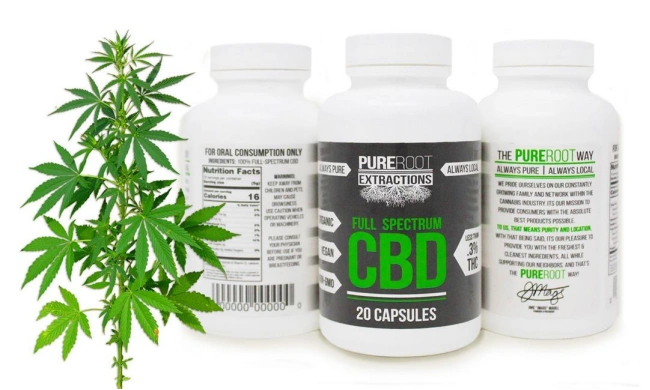
Emerging Trends and Future Outlook
Integration with Other Products
Cannabis tinctures are no longer confined to sublingual or oral use; they are increasingly being incorporated into a wide variety of consumer products, expanding their versatility and appeal.
Edibles and Beverages
Tinctures offer a simple, precise way to infuse foods and drinks with cannabinoids. Unlike traditional cannabis oils or butters, tinctures can be added directly to recipes without altering texture or flavor profiles. For example, THC and CBD tinctures are now used to create cannabis-infused cocktails, mocktails, teas, and sodas. Recipes like the Mango THC Mocktail (using a mango THC syrup) and Berry Bliss CBD Sparkler (using a calming CBD tincture) exemplify this trend, providing consumers with non-alcoholic, cannabinoid-infused beverages for social or wellness occasions. Tinctures can also be added to a wide range of foods, from salad dressings to desserts, allowing for both culinary creativity and precise dosing.
Topical Products
Tinctures are being formulated into creams, balms, and lotions for targeted relief. Oil-based tinctures, in particular, are suitable for skin applications, leveraging cannabinoids’ anti-inflammatory and antioxidant properties. Research shows that vegetable oil-based cannabis tinctures can provide photoprotective and antioxidative effects for skin health, as demonstrated in studies using virgin coconut oil as a carrier.
Transdermal Patches and Smart Devices
Innovative delivery systems, such as tincture-infused transdermal patches, are emerging, offering controlled, sustained cannabinoid release. Integration with smart devices for precise dosing and effect tracking is also on the horizon, enhancing user experience and compliance.
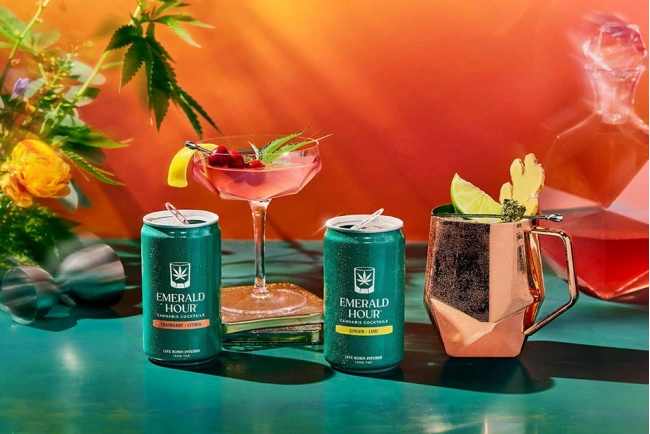
Personalization
Custom Formulations
Personalized cannabis tinctures are becoming increasingly popular, allowing consumers to tailor cannabinoid and terpene profiles to their unique health goals and preferences. Companies like Native Ceuticals offer custom-crafted tinctures based on user input regarding wellness priorities-such as sleep, stress, focus, or recovery-resulting in blends specifically designed for individual needs. This approach empowers users to experiment with ratios of THC, CBD, and minor cannabinoids, as well as terpene profiles, to optimize therapeutic outcomes.
Genetic-Based Personalization
Advancements in genetic testing are enabling even deeper personalization. By analyzing an individual’s genetic profile, healthcare professionals and companies can recommend tincture formulations and strains that align with a person’s cannabinoid receptor makeup, metabolism, and susceptibility to side effects. For instance, genetic insights can help determine the optimal THC/CBD ratio for pain relief, relaxation, or focus, and even guide dosage recommendations. This integration of genetic data with product formulation is paving the way for precision cannabis medicine and safer, more effective use.
Microdosing and Wellness
The precision dosing afforded by tinctures supports the growing trend of microdosing-consuming small, controlled amounts of cannabinoids for subtle therapeutic effects without intoxication. This appeals to users seeking relief from anxiety, pain, or insomnia while maintaining daily functionality.
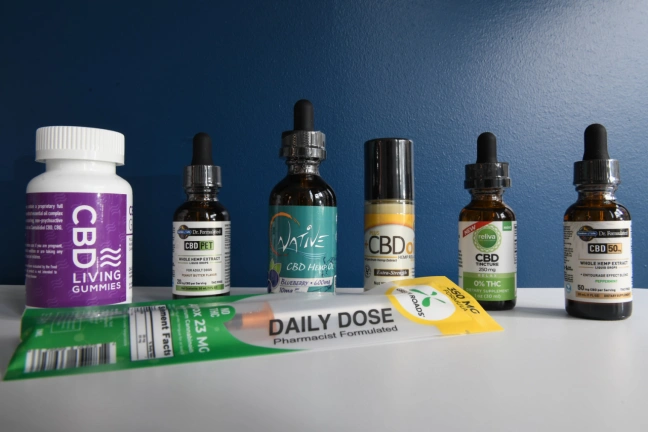
Sustainability
Eco-Friendly Extraction Methods
The cannabis industry is adopting greener extraction techniques, such as CO2 extraction, which is non-toxic, leaves no harmful residues, and allows for the recycling of CO2, reducing waste and environmental impact. Vegetable oil-based extractions are also gaining traction as affordable, non-toxic, and eco-friendly alternatives, producing high-quality tinctures with beneficial skin and health effects.
Sustainable Packaging
Packaging waste is a significant concern, with studies showing that cannabis products often use 70% more packaging than necessary. In response, brands are shifting to biodegradable, recyclable, and compostable materials, such as kraft paper, paperboard, and hemp-based packaging. Custom tincture boxes made from eco-friendly paper can be printed with soy-based inks and water-based coatings, aligning with consumer demand for sustainability and reducing the industry’s carbon footprint. Companies are also embracing minimalist designs and reusable containers, further minimizing environmental impact.
Regenerative and Responsible Cultivation
Sustainability extends to cultivation practices, with many producers adopting regenerative farming, renewable energy, and water conservation measures to reduce the overall environmental footprint of cannabis production.
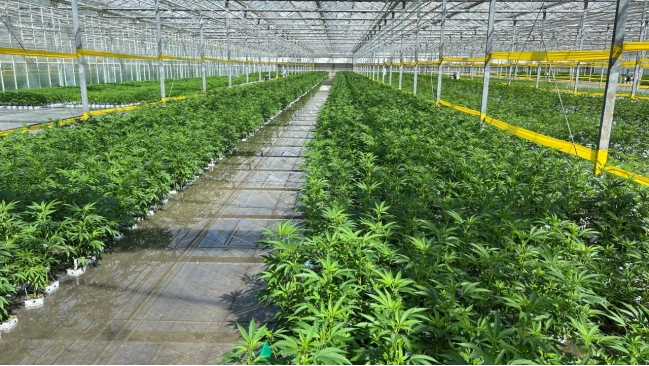
Global Expansion
Europe
The European cannabis market is experiencing rapid growth, driven by increasing legalization and patient demand. In 2023, the European cannabis extract market generated $427.2 million, with a projected CAGR of 21.3% through 2030. Germany and the UK are leading the charge, with Germany’s medical cannabis market growing 50% annually since 2017 and the UK seeing a 300% increase in medical cannabis prescriptions from 2018 to 2023. By 2028, these two countries are expected to account for 77% of all medical cannabis sales and patient numbers in Europe. The expansion is supported by growing clinical research, diversified product offerings (including tinctures), and increasing investment in cannabis startups.
Latin America
Latin America’s cannabis market is projected to reach nearly $1 billion by 2028, up from $440 million in 2024, fueled by increased local cultivation, low production costs, and expanding end-product manufacturing. Brazil, Mexico, and Argentina are leading the region, which benefits from a large potential user base and favorable agricultural conditions. Legal medical cannabis is gaining traction, with a growing number of patients and adult-use customers.
Asia-Pacific
The Asia-Pacific region is emerging as a significant market for cannabis extracts, including tinctures, as dietary habits shift toward healthier alternatives and regulatory barriers fall. Thailand’s decriminalization of cannabis in 2022 opened new opportunities, and Australia’s medicinal cannabis patient base has grown from under 500 in 2018 to over 100,000 by 2021. The region’s growth is further propelled by investments in research and a rising focus on wellness products.
North America
North America remains the dominant market, accounting for over 40% of global cannabis tincture revenue in 2024. The mature regulatory framework, consumer education, and product innovation continue to drive growth and set trends that influence global markets.


Conclusion
Cannabis tinctures have firmly established themselves as a cornerstone of the modern cannabis industry, offering unmatched versatility, precision, and accessibility. Their resurgence is fueled by a confluence of factors: scientific validation of therapeutic benefits, consumer demand for smoke-free alternatives, and a wave of regulatory reforms that are opening new markets worldwide. Innovations in extraction, packaging, and product formulation are pushing the boundaries of what tinctures can offer, while sustainability and personalization are setting the stage for the next generation of cannabis products.
As the global cannabis landscape continues to evolve, tinctures will remain at the forefront of industry growth and consumer adoption. Brands that prioritize quality, transparency, and environmental responsibility will be best positioned to thrive in this dynamic environment. For consumers, the expanding array of tincture options means more choice, better safety, and greater potential for tailored wellness solutions. The future of cannabis tinctures is bright, promising continued innovation, broader acceptance, and a central role in the ongoing transformation of cannabis culture and commerce.
